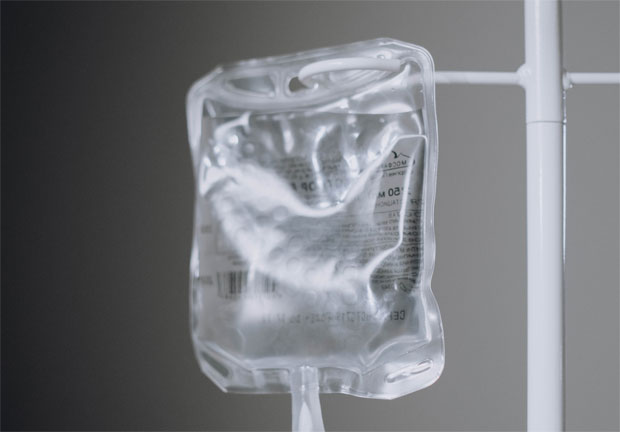Whipple Disease and IV Hydration Drip: A Promising Treatment Option

Whipple Disease and IV Hydration Drip: A Promising Treatment Option
Whipple disease is a rare bacterial infection that affects various parts of the body, including the small intestine, joints, heart, and brain. The disease is caused by a bacterium called Tropheryma whipplei, which can be found in soil and water. Whipple disease is more commonly found in middle-aged men and can be fatal if left untreated. Symptoms of Whipple disease may include chronic diarrhoea, weight loss, abdominal pain, joint pain, and neurological symptoms such as memory problems and confusion. Timely diagnosis and treatment with long-term antibiotic therapy are crucial to effectively manage Whipple disease and improve patient outcomes. If you experience persistent symptoms or suspect you may have Whipple disease, it is important to consult a healthcare professional for proper evaluation and guidance.
Current Treatment Options for Whipple Disease
Currently, the standard treatment for Whipple disease is a combination of antibiotics, such as ceftriaxone and trimethoprim-sulfamethoxazole. These antibiotics are given for a period of 12-24 months, depending on the severity of the infection. However, some patients may not respond to antibiotic treatment, or they may experience side effects such as nausea, vomiting, and diarrhoea. In such cases, alternative antibiotic regimens or additional medications may be considered to effectively manage the disease. It is important for patients to closely follow their healthcare provider’s guidance, report any concerning side effects, and attend regular follow-up appointments to monitor the progress of treatment and make any necessary adjustments. Additionally, maintaining good overall health and nutrition can support the recovery process and enhance the effectiveness of treatment for Whipple disease.
What is IV Hydration Drip Therapy?
IV hydration drip therapy involves the administration of fluids, electrolytes, vitamins, and minerals directly into the bloodstream through an intravenous (IV) drip. This therapy is commonly used to treat dehydration and nutrient deficiencies, but it has also been shown to have potential benefits for various health conditions, including Whipple disease. By delivering essential nutrients directly into the bloodstream, IV hydration drip therapy can support the body’s immune system, enhance overall well-being, and aid in the recovery process. In the case of Whipple disease, where patients may experience nutrient deficiencies and gastrointestinal issues, IV hydration drip therapy can help replenish vital nutrients and promote better absorption, supporting the body’s healing and recovery.
How Does IV Hydration Drip Therapy Work for Whipple Disease?
IV hydration drip therapy works for Whipple disease by delivering fluids, electrolytes, vitamins, and minerals directly into the bloodstream through an intravenous (IV) line. This method ensures rapid and efficient absorption of essential nutrients, bypassing the gastrointestinal tract, which may be compromised in Whipple disease.
Whipple disease can lead to chronic diarrhoea, malabsorption, and nutrient deficiencies, resulting in dehydration and weakened immune function. IV hydration drip therapy helps address these issues by restoring fluid balance and replenishing essential nutrients that may be lacking in the body.
The IV fluids used in hydration therapy are carefully formulated to provide the necessary hydration and electrolyte balance required by the body. This helps rehydrate the cells, tissues, and organs, promoting overall well-being and supporting the body’s natural healing processes. In addition to fluids, IV hydration drip therapy can include the administration of vitamins and minerals tailored to the specific needs of the individual with Whipple disease. These supplemental nutrients can help correct deficiencies, support immune function, and aid in tissue repair and recovery. To explore more about IV hydration drip therapy and its potential benefits for Whipple disease, you can visit govidaflo.com. They offer specialized IV hydration services designed to meet individual needs and promote optimal health and wellness.
What Are the Benefits of IV Hydration Drip Therapy for Whipple Disease?
There are several potential benefits of IV hydration drip therapy for Whipple disease, including:
1. Rehydration: IV hydration therapy helps restore fluid balance in the body, addressing dehydration caused by chronic diarrhoea and malabsorption associated with Whipple disease. Proper hydration is essential for overall health and supports the optimal functioning of bodily systems.
2. Nutrient supplementation: IV hydration drip therapy can deliver essential vitamins, minerals, and electrolytes directly into the bloodstream. This is particularly important for individuals with Whipple disease who may have difficulty absorbing nutrients through the gastrointestinal tract. By providing these vital nutrients intravenously, IV therapy helps address nutrient deficiencies and supports overall nutritional well-being.
3. Immune system support: Whipple disease can weaken the immune system, making individuals more susceptible to infections and illnesses. IV hydration drip therapy can help boost immune function by providing the necessary nutrients that play a key role in immune response, such as vitamin C and zinc. Strengthening the immune system can enhance the body’s ability to fight off infections and aid in the recovery process.
4. Improved energy levels: Chronic diarrhoea and malabsorption in Whipple disease can lead to fatigue and decreased energy levels. IV hydration therapy replenishes fluids and nutrients, which can help improve energy levels and promote a sense of well-being.
5. Enhanced treatment efficacy: By addressing dehydration, malnutrition, and nutrient deficiencies, IV hydration drip therapy can complement other treatments for Whipple disease, such as antibiotic therapy. Proper hydration and optimal nutrient levels can enhance the effectiveness of medication and support the body’s healing process.
Conclusion
Whipple disease is a rare bacterial infection that can be difficult to diagnose and treat. While antibiotics are the standard treatment, they may not be effective for all patients and can lead to antibiotic resistance. IV hydration drip therapy is a promising treatment option for Whipple disease, as it can help to improve immune function, reduce inflammation, and eradicate the bacterium more effectively than antibiotics alone. Additionally, the therapy is generally safe and well-tolerated, making it a viable alternative to prolonged antibiotic use.
Guest Article.




